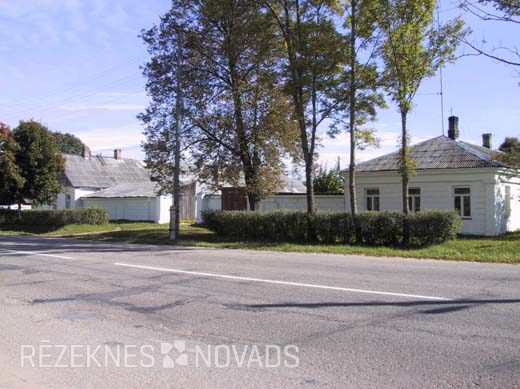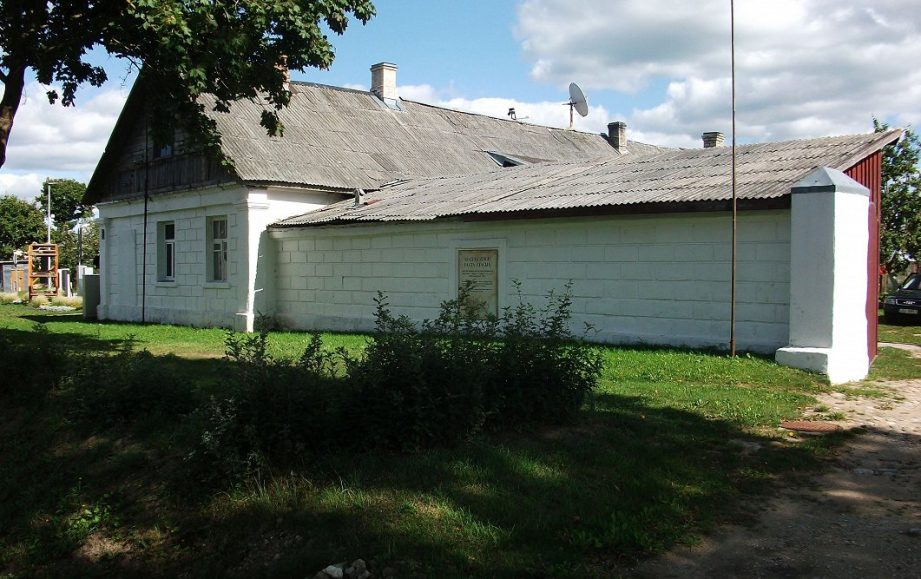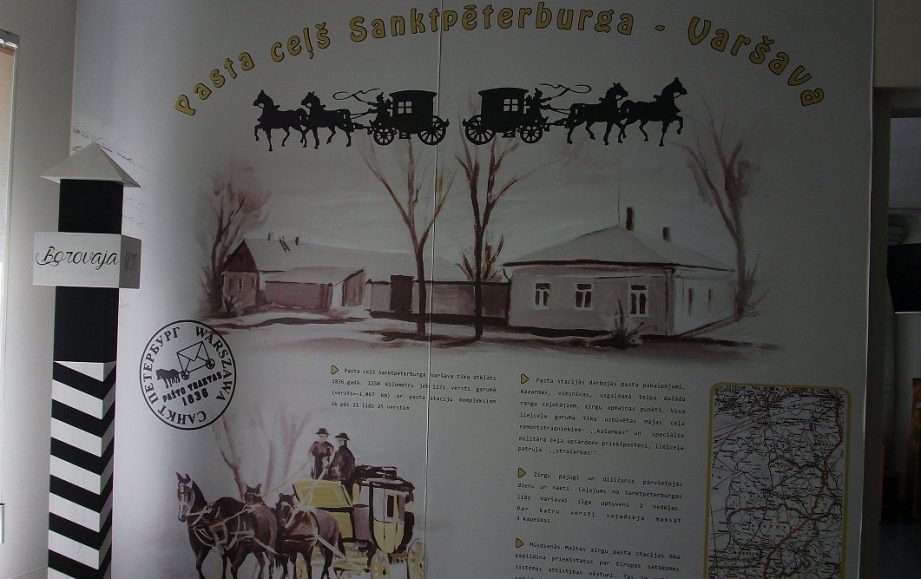Malta Horse Post Station Building
Malta Horse Post Station Building is an important accent of the local architecture, which continues to hold historical evidence related to the past of this place. It is a unique monument of architecture, county history, and transport development. This significantly adds to the ideas about the development of the European traffic system.
From 1772 to 1917, Latgale (Inflantia) was part of the Russian Empire. On July 16, 1828, by the decision of the Russian Nicholas I, the construction project of the tract Saint Petersburg - Warsaw was approved. The tract was built between 1830 and 1836. The construction of the highway, taking into account the technical possibilities of the time, was a grandiose project. It was the most modern road of the time, which had important strategic, political and social significance. In order to service and look after the road, it was necessary to build various multifunctional buildings and conveniently place them near the tract. A whole building localization system was created for this purpose; new settlements began to form near the new tract, the volume of mail and passenger transport increased, the construction of post stations began.
Of the route St. Petersburg - Warsaw is about 1,171 versts (1,250 km), and half-stations, roadkeepers' buildings and stagecoach stops were built about every 7-10 versts (an hour's journey). Small stone houses have been preserved on the roadsides to this day - the houses of the guards or the houses of the road guards, which were called "kasharkas". At a distance of about 15-20 versts from the main road, road blockade buildings or so-called "stražarkas" were built - special buildings for road patrols, military guards, who checked drivers and issued special permits for the use of the tract.
The most important of the tract were the buildings of the post station - two or three-building post stations and their complexes, which were located about every 21-25 versts (instead of 12-22 or 16-20 versts). The distances between stations varied depending on the location of settlements and major road crossings, rivers and water bodies. The buildings of the post station were built according to typical projects in the classicist style. Post stations performed postal service, horse exchange and military functions. 15 minutes were allocated for changing horses. The central post office building had waiting rooms with accommodation and catering services, separate rooms for high-ranking travelers, as well as cellars and warehouses. Taverns sprung up next to post stations.
At all times, the distances between settlements, cities and villages were measured from post stations.
The later center of the parish - Borovaja began to form after the construction of the Petersburg - Warsaw highway in 1836. This place became an important crossroads, the volume of business, trade and transport increased significantly. A new settlement was formed - Borovaya (Russian: Боровая , from бор - heather), which was in a favorable geographical location - near the intersection of four roads and the railway. During this time, the first houses of the village of Borovaja were built - a horse post station with a drive-in barn and a tavern. It was the first brick house in the village, later shops and stores appeared. 1897. In 1990, most of the buildings belonged to the Ministry of Transport and were inhabited by highway and railway workers and craftsmen. Police officials also lived in.
1880 On January 4, a certificate was issued to the landlord of Rēzekne, Ivan Visocki, for the Borovaja pub.
1887 the 28th tract of local importance, which led from Rozentova to Antonopole (Malta) railway station, is also mentioned. The Rozentova post office sent various correspondence to and from the Petersburg and Dinaburg tracts every day. Presumably, the post office was located in the post office.
Guard huts and workers' barracks were built. In 1914, there was a watchman's hut in the 19th verst of Rozentova Parish, where 3 men and 5 women lived. The barracks on the 20th verst of the highway was located next to the Borovaja, where 2 men and 2 women lived.
Borovaja became the main trading place of the area. The weekly market served six parishes on Thursdays, and its turnover was no less than that of Rēzekne. There was a great demand for carts and sleds made by local craftsmen. In 1893, 26 wheelwrights, 19 tanners, 13 blacksmiths, 11 shoemakers, carpenters, blacksmiths worked in Borovaja. 1914 143 men and 156 women lived in Borovaja. Borovaja with 715 inhabitants began to develop into a larger village around 1923. In 1933, Borovaja was granted the status of a densely populated place (village). 1937. on July 7, the village of Borovaja is renamed Malta.
The building complex of the Malta Post Station has survived to this day. The horse post station consists of two bodies of the same appearance, but different layout (14x8m) with the side ends facing the highway. They are connected by a masonry wall (50 m long) with two large gates in the middle. Two smaller gates are installed on both sides of the fence. The courtyard is covered from the outside by a stone carriage house and a stable. Part of the premises was used for administrative needs and living, the other part for economic needs. The corners of the window bays are separated by frames of different lengths. These frames and modestly profiled eaves, mosaic walls of stones and fragments add variety to the buildings. The Malta Post Station building is a type of smaller roadside settlement or road junction, characterized by the interconnection of different buildings. The post office is on the south side of the tract.
In 1820, a technical innovation of that time appeared on Russian roads - stagecoaches. Letters, parcels, various official documents, securities were transported with postal carts. It was a heavy canvas covered cart with small windows. 15-20 passengers could be transported in this way. The cart was pulled by 4-6, sometimes even 8 horses. The trip from St. Petersburg to Warsaw took about two weeks. Passengers were carefully registered. Preference was given to high-ranking civil servants, noble ladies and rich people. The cost of these trips was high - three kopecks per person had to be paid, regardless of the age of the passengers. In addition, the number of horses, lubrication of the chariot wheels and other things had to be paid. In the warm months, more passengers were transported, while in the winter, goods were transported.
The situation on the tract was changed by the construction of the Ostrova - Dinaburga section of the St. Petersburg - Warsaw railway line in 1860, directly parallel to the highway (in 1862, the entire St. Petersburg - Warsaw railway line was opened). The number of travelers in the tract decreased by about 5-7 times. The land highway lost its function as a long-distance highway, and the horse post station lost its importance.
Always busy and full of life, post offices became serene post, telegraph and telephone stations of local importance, work premises or apartment buildings.
Today, the tract road has regained its importance in international goods transport and tourism flow, especially after the suspension of passenger trains.
The material was prepared Silvija Pīgožne, based on Jonasa Pleckevičusa, Jurija Čertova, Agra Dzeņa for research materials.
Photos from Jonasa Pleckevičusa for research materials " Senais trakts Sanktpēterburga - Varšava" un "Sankt Peterburgo - Varšuvos traktu nuo Rezeknes iki Utenos".
| Address | 1. maija iela 39, Malta, Maltas pagasts, Rēzeknes novads |
| Coordinates | 56.343949 ; 27.159161 |
| Phone | +371 26189569 |









